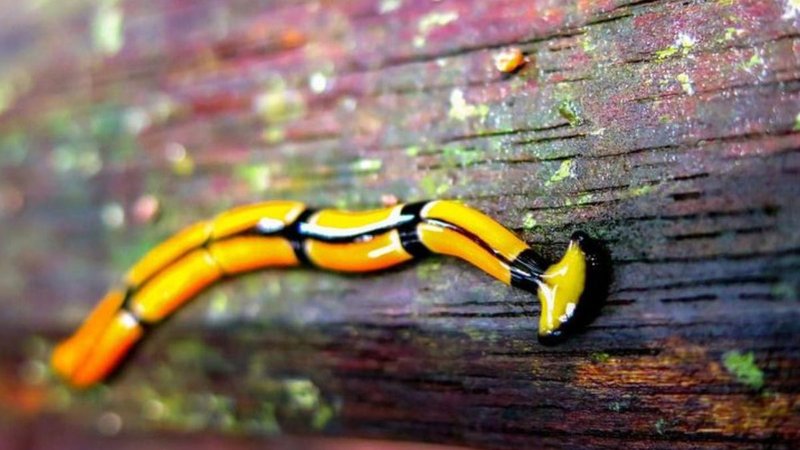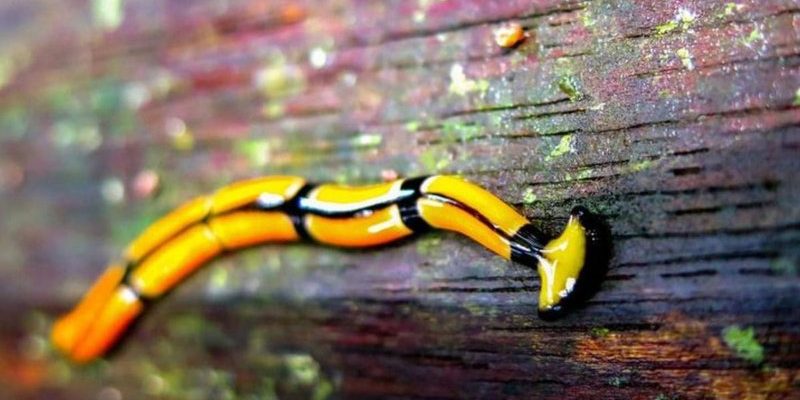
Now, imagine you’re sitting in a cozy café, sipping on your favorite drink, and we’re chatting about field cameras. Brands like the Bushnell Trophy Cam or the Reconyx HyperFire can play a big role in uncovering the secrets of the Malayan Hammerhead Worm. These cameras allow us to document their movements and activities without disturbing their natural behavior, much like having a front-row seat to a fascinating play in the wild.
Understanding the Malayan Hammerhead Worm
The Malayan Hammerhead Worm, or *Bipalium kewense*, is a type of flatworm that’s primarily found in Southeast Asia. These worms are characterized by their unique hammer-shaped heads, which resemble a small, flat paddle. You might be wondering, “Why should I care about a worm?” Well, these creatures actually play a crucial role in their ecosystem. They help control insect populations and can even indicate the health of their environment.
One of the coolest things about these worms is their predatory nature. They hunt down their prey, which mostly consists of earthworms and other small invertebrates. Picture this: a worm stealthily gliding over the soil, ready to pounce on its unsuspecting dinner. This feeding behavior is not just fascinating; it’s essential for maintaining balance in the ecosystem.
Why Use Field Cameras?
You might think, “Why not just observe them directly?” Well, here’s the thing: direct observation can disrupt the natural behavior of the Malayan Hammerhead Worm. By using field cameras, we can watch them in real-time without interference. It’s like being a ghost in their world, letting us see their true interactions and habits.
Field cameras capture high-quality images and videos, allowing researchers and enthusiasts alike to document their findings. Plus, many of these cameras come equipped with night vision, meaning you won’t miss a thing, even when the sun goes down. Imagine being able to catch a worm on the hunt under the stars!
Selecting the Right Field Camera
When choosing a field camera, there are a few features to consider to ensure you get the best footage of the Malayan Hammerhead Worm. Look for cameras with:
- High Resolution: You want at least 1080p video to capture fine details.
- Motion Detection: This feature ensures the camera starts recording as soon as the worm enters the frame.
- Night Vision: Since these worms are often active at night, having infrared capabilities is a must.
- Durability: Outdoor cameras need to withstand weather conditions, so go for one that is weatherproof.
Brands like Bushnell and Reconyx typically offer robust options that fit these criteria. It’s all about finding the right balance between price, features, and user-friendliness so you can focus on documenting and not troubleshooting.
Setting Up Your Field Cameras
Once you’ve chosen your field camera, it’s time to set it up! Here’s a simple step-by-step guide to help you get started:
1. Choose the Right Location: Look for areas where you’ve spotted the Malayan Hammerhead Worm before. They tend to hide in moist, shaded environments, so keep that in mind.
2. Mount the Camera: Use a tripod or a strap to secure the camera at eye level with the ground. This positioning increases your chances of capturing those elusive movements.
3. Test the Angle: Before you leave it unattended, do a quick test run to see if the camera captures the area you want to observe. Adjust the angle if necessary.
4. Configure Settings: Set the camera to video mode and adjust the motion sensitivity. You want it to capture the worm without getting triggered by every leaf that moves.
5. Leave It Alone: Now, patience is key. Let the camera run for several days to give you the best chance of documenting behavior without interference.
Common Challenges and Troubleshooting
Even with the best equipment, things can go wrong. Here are some common challenges you might face and how to troubleshoot them:
– Camera Not Triggering: If the camera isn’t activating, check the motion sensitivity settings. Sometimes a simple adjustment can make a big difference.
– Blurry Footage: This can be caused by a shaky mount or improper focus. Ensure the camera is securely mounted and, if needed, go for a model with adjustable focus.
– Battery Issues: A dead battery can cut your observation short. Before setting up, check that batteries are fresh, and consider using rechargeable batteries for sustainability.
– Storage Space: Ensure you have a good-sized SD card. Nothing’s worse than setting up your camera only to discover there’s not enough space for all the exciting footage!
Analyzing Your Findings
After a few days or weeks of recording, it’s time to go through your footage. This can be one of the most exciting parts! Be prepared to see some surprising behaviors. You’ll likely notice patterns in their movement, feeding habits, and maybe even their interactions with the environment around them.
Take notes as you observe and categorize behaviors. For instance, do they tend to hunt at certain times of the day? Are they more active after rain? These insights can be invaluable, not just for your understanding but also for contributing to the larger body of knowledge around these fascinating creatures.
Why This Matters
Documenting the behavior of the Malayan Hammerhead Worm may seem niche, but it matters. By studying these worms, we gather data essential for understanding their role in the ecosystem. Monitoring their populations can also indicate environmental changes, such as habitat loss and pollution. Plus, it can raise awareness about lesser-known species.
So the next time you think about wildlife observation, consider the unsung heroes of the soil—the Malayan Hammerhead Worm. With a good field camera and a bit of patience, you can uncover the mysteries of their world, all while contributing to science and ecology.
In the end, every observation counts. The more we know about these little creatures, the better we can protect them and their habitats. So grab that camera, head out into the wild, and start documenting—you never know what you might discover!

